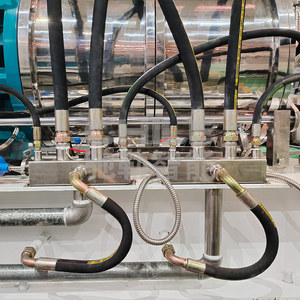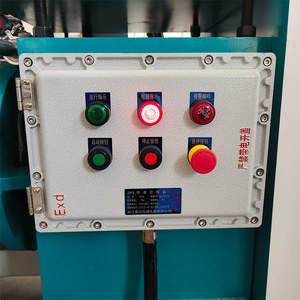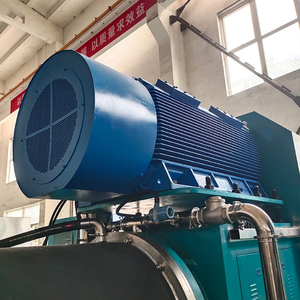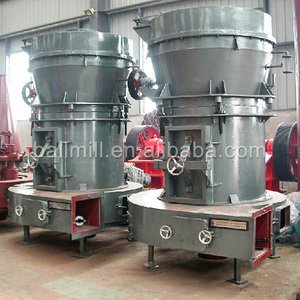
All categories
Featured selections
Trade Assurance
Buyer Central
Help Center
Get the app
Become a supplier

(731 products available)
































Grinding mills come in various types to handle the grinding of perlite to required sizes.
Stones or ceramic balls are used in ball mills to crush and grind materials by rolling between heavy round shapes. This type of mill provides a fine grind, ideal for producing micro and sub-micron perlite powder. Fine grinding is essential in creating perlite of powdery consistency for agricultural use and manufacturing lightweight concrete.
Raymond grinding utilizes flat rolls and a ring to trap and pulverize particles between the surfaces. Raymond mills are suitable for intermediates of about 200 mesh. This is the common fineness needed for perlite. This mill offers an efficient way to produce consistent mesh sizes required in expanding perlite fields.
Material particles are reduced by using high-velocity air streams and gas around this mill. Jet mills produce very fine powders of materials like graphite and talc, which have the same effectiveness as perlite. It can produce very fine powders of perlite, which increases the material's surface area and potential reactivity for specialized applications.
A hammer mill pulverizes material using metal hammer blows that are swung or fixed on miles inside a steel mill case. This mill is primarily used for coarse perlite grinding and offers high production rates. This type of mill is more appropriate for larger perlite particles used in construction and industrial applications.
In vertical grinding, material is ground between horizontally placed grinding discs and a stationary annular ring. The large area contact of the grinding components provides very effective grinding. The vertical roller mill is suitable for ultrafine perlite required in dense formulations like paints or plastics.
When selecting a grinding mill for perlite, there are several key-technical considerations that need to be addressed.
The desired final material particle size significantly impacts mill type selection. Hammer mills and ball mills are appropriate for coarse grinding, where larger particles and mesh sizes are desired. A ball mill provides a fine grind, while jet mills are employed for ultra-fine requirements. Raymond mills are suitable for producing intermediate particle sizes. Potential perlite uses will determine the required grind.
Grinding mill selection must consider the production capacity needed. Perlite expansion and mining industries utilize large-scale ball and hammer mills for high bulk production. Raymond and jet mills are used in smaller production perlite grinding. The mill that provides the required output without efficiency loss should be chosen.
The hardness of the material to be ground affects milling efficiency and the wear of milling components. Perlite has a relatively low hardness on the Mohs' scale. However, continuous grinding will lead to some wearing of parts. For very abrasive materials, impact types of mills, such as hammer and jet mills, should be utilized.
Octagonal jali is energy-efficient compared to cone mill and other mills. However, the energy required will vary depending on the mill used to grind the perlite. Energy consumption directly relates to operational costs and profitability in the long run. Vertical mills usually consume less energy than ball or hammer mills because of the grinding principle.
The perlite type grinding mill has a great impact on maintenance requirements and the overall cost of ownership. Since perlite is not hard, the wear of the mill parts will also be minimized. Jet and hammer mills typically require more frequent maintenance than ball and vertical mills because of the high-velocity grinding they perform.
Before grinding, the perlite material needs to be dried to eliminate moisture that will affect the milling process. This can be done through convectional heating or using a microwave. In a perlite washing process, a grinding mill is fed with untreated perlite ore through a feed inlet or hopper. Grinding balls, beads, or hammer blades are added to a ball mill, bead mill, or hammer mill, respectively.
The grinding mill operation is set, depending on the type and required particle size of the mill. In the case of ball and hammer mills, the temperatures and grinding duration are not very crucially controlled, but the mill must be operated in a safe manner. For jet and bead mills, high-velocity air or beads are injected to finely grind the perlite, producing ultra-fine powders. The resultant perlite powder is then collected at the mill endpoint from discharge chutes and cyclones. This is often captured in a bagging unit, ready for distribution.
Perlite grinding mills produce the perlite needed for the production of expanded perlite. Raw perlite is first crushed to a particle size of about 1 inch using a hammer mill or a jaw crusher. The crushed perlite is then ground into a finer powder using ball mills, Raymond mills, or vertical mills. The fine perlite powder is then sieved to ensure uniformity and remove any large particles. The processed perlite is then packaged for shipment or stored for use in expanded perlite processing.
Ground perlite in agriculture is used to manufacture potting mixes, which help to improve aeration and drainage in agricultural soils. This allows the crops to grow healthier as they are more able to absorb the nutrients. Fine perlite powder is used in agriculture as an insecticide dust. It smoothly coats insects, disrupting their ability to retain moisture and eventually leading to dehydration.
Ground perlite is used in construction as a lightweight aggregate used to manufacture concrete and cement. This helps improve thermal and fire insulation. Perlite powder acts as a filler in manufacturing lightweight bricks and blocks. This reduces the overall weight of the masonry units without compromising strength.
Perlite mills provide the perlite that is used as a filler in manufacturing paints, coatings, sealants, and other materials. In these applications, perlite enhances viscosity, texture, and opacity. Perlite in powder form is used in filtration processes of liquids in chemical, food and beverage, and water treatment industries. Due to its porous nature, it serves well in absorption and separation processes.
Regular maintenance helps ensure that the grinding equipment offers high efficiency over time with regards to the operation it performs.
Lubrication is very important in maintenance because, without it, the bearing will be worn out. Lubricate all the bearings and the parts' journals and other elements as required by the manufacturers. Use the recommended type of oil or grease in the mill for proper functioning. Reduce the mill's wear and overheating by reducing friction among various parts.
Perlite grinding mill will be worn out with a long grinding time. Wear will mainly affect the grinding elements such as hammers, balls, rollers, or rings. Regularly check for wear signs and then replace the worn-out parts. Continuing to use worn-out parts decreases grinding efficiency and increases time taken to do the grinding and energy consumption.
Inspections should be made on the mill and all its parts for potential damages or abnormal sounds. Look for cracks, misalignment, and excessive vibration. Equipment problems can lead to decreased process quality. Finding them early on will help improve efficiency.
Grinding mills must be periodically checked to ensure the grinding parameters such as speed, feed rate, and force are correctly set. Misdialed machines cause inefficient grinding or huge resultant particles. Correct calibration enhances the resultant product consistency and quality.
Cleaning the mill should be done regularly after several uses and at the end of each day and after long-time use. Dust accumulation and ground perlite particle accumulation will impact the grinding space. This can cause contamination and affect the grinding efficiency because of clogged parts. Cleaning should be thorough in between grinding sessions of different products to avoid cross-contamination.
Replacement of the worn-out or damaged parts should be done when they are mostly worn out. This includes things like hammers, grinding balls, and liners. Failure to do this may lead to a decrease in efficiency and increase the amount of energy that is consumed. Spare parts should be replaced once they are damaged at a timely rate. Having and storing spare parts is good for the quick maintenance of machines and for always having them ready for any destruction and wearing down.
Perlite grinding industrial grinding mills has several benefits that enhance the efficiency of perlite milling and product quality.
Grinding mills help to reduce the size of perlite particles in a controlled manner. It achieves the desired fine, coarse, or intermediate grind of expanded perlite. Such precise control enables the resultant material to have an appropriate particle size for several applications. Without grinding, perlite would have uneven sizes not useful for its end uses.
Grinding mills for sale provide for consistent particle size distribution in the perlite products. This is a key factor in applications where uniformity is required, such as in agriculture and construction. Variability in particle size can affect product performance. For instance, varying particle sizes in agricultural soil mixes can affect aeration and water retention differently.
Grinding increases the surface area of perlite particles, enhancing their effectiveness in applications. More surface area makes expanded perlite better for absorption in filtration, packaging, and agriculture. It also enhances the bonding of cement in construction applications, improving concrete strength. Fine ground perlite in powders improves the lift and fill of perlite in these applications.
Using different types of grinding mills, perlite can be ground to different sizes for various industrial applications. Such applications include agriculture, construction, and filter aids. Fine perlite serves in making paints, plastics, and other forms of cosmetics. Coarse perlite acts as a lightweight aggregate in building and civil engineering. It also serves as a soil amendment in gardening.
Modern perlite grinding mills are very energy-efficient. They can produce the desired grind with the minimum energy required to reduce the cost of operations. Because of this, it becomes practical, especially at large scales. Energy savings are advantageous for the environment as well as for economic factors.
Perlite mills produce a high-quality final product. Grinding mills reduce impurities and defects in the raw perlite material. This improves the purity and quality of the final perlite powder product. High-quality perlite improves product performance in end uses.
A1: Perlite powder is used in agriculture as soil amendment and in construction as cement and concrete additive. It's also used in manufacturing lightweight aggregates and fill-ins.
A2: A ball mill, hammer mill, or jet mill is suitable for producing fine perlite powder as they all effectively grind perlite to the required particle size.
A3: Perlite mining and grinding machinery crush perlite ore into smaller pieces and grind it into a fine powder using grinding balls or hammers within the mill chamber.
A4: The expansion process turns perlite powder into a lightweight, porous material by heating it to around 900°C, causing it to expand and form unique air-filled particles.
A5: Expanded perlite powder provides thermal and acoustic insulation in construction, industrial, and commercial buildings due to its lightweight and insulating properties.